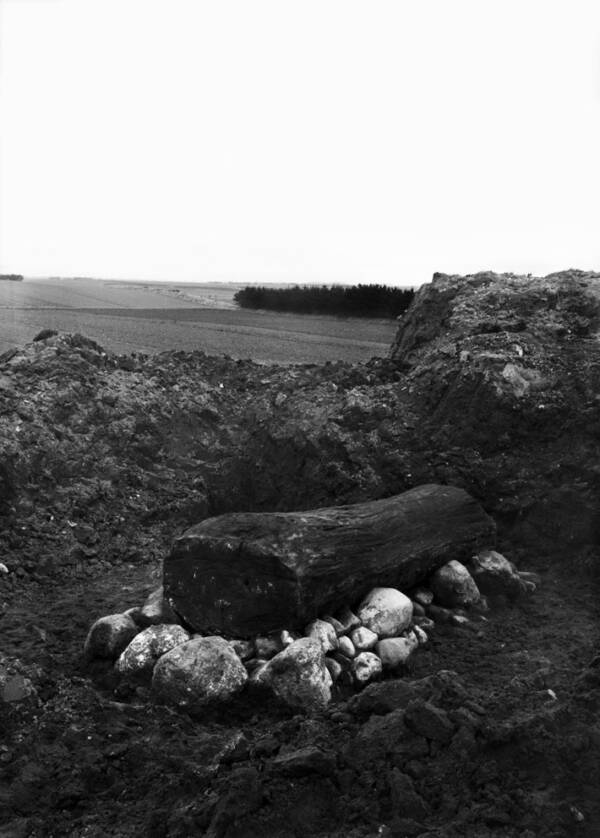The Egtved Girl: The “Bronze Age Bride” Who Was Buried In A Peat Bog In Denmark

The National Museum of DenmarkThe Egtved Girl’s final resting place, an oak coffin that was uncovered near the village of Egtved in Denmark.
In 1921, researchers at an archaeological site near Egtved in Denmark unearthed the ancient remains of a teenage girl within a burial mound of thick peat bog. The remains, which dated back to 1370 B.C.E., were buried with an ox hide and a woolen blanket in an oak coffin.
But according to Ancient Origins, although the blanket held the girl’s shape, much of her actual body was gone. However, certain body parts had been preserved very well, including her fingernails, hair, and scalp.
This strange and eerie preservation, scientists said, is the result of a microclimate caused by the region’s soil. As rainwater seeped into the hollowed-out oak coffin, it created an oxygen-starved environment that, over the course of several centuries, decayed her bones entirely.
Still, the finding caused quite a stir in Denmark in the 1920s, and the ancient teen soon came to be known as the “Egtved Girl.”
Also buried with her were the ashes and bones of a young child, believed to be around five or six. But no identity has been attached to them, leaving the child’s relationship to the Egtved Girl somewhat of a mystery.
Among the clothing items that remained were a large, bronze belt disc, bronze pins, and a hair net. Local flowers rested on top of the coffin alongside a small bucket of beer made from honey, wheat, and cowberries.

The National Museum of DenmarkThe Egtved Girl was believed to have been slender, blonde, and of high social status.
Then, in 2015, researchers studying the girl’s remains made a remarkable discovery: The girl wasn’t from the Denmark region at all.
New information revealed that the girl — who, at an age between 16 and 18, would have likely been considered a woman in her time — may have actually hailed from the Black Forest of modern-day Germany. She probably traveled between the Black Forest region and the Egtved region in her final years.
Now known as a “Bronze Age bride,” the girl was likely sent to the Egtved region to marry a chieftain there, according to Archaeology Magazine.
This may also offer some insight into the identity of the child buried with her.
As Kristian Kristiansen of the University of Gothenburg explained, “Dynastic marriages were often followed by an exchange of ‘foster brothers’ to secure the alliance.” The ashes of the child, then, would have either belonged to a boy from the Black Forest region or from the Egtved region, who was meant to be exchanged with a different boy from the other tribe.





